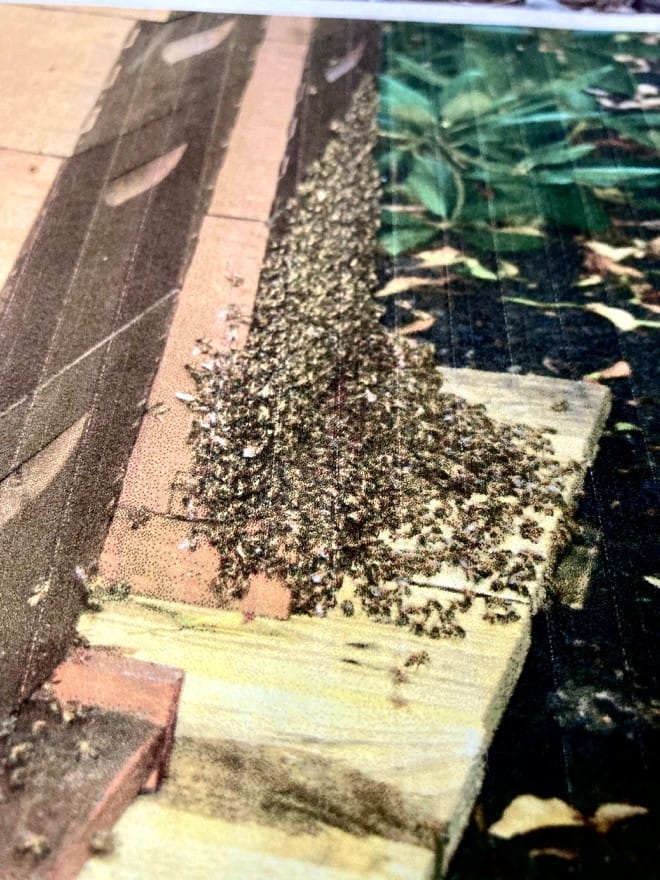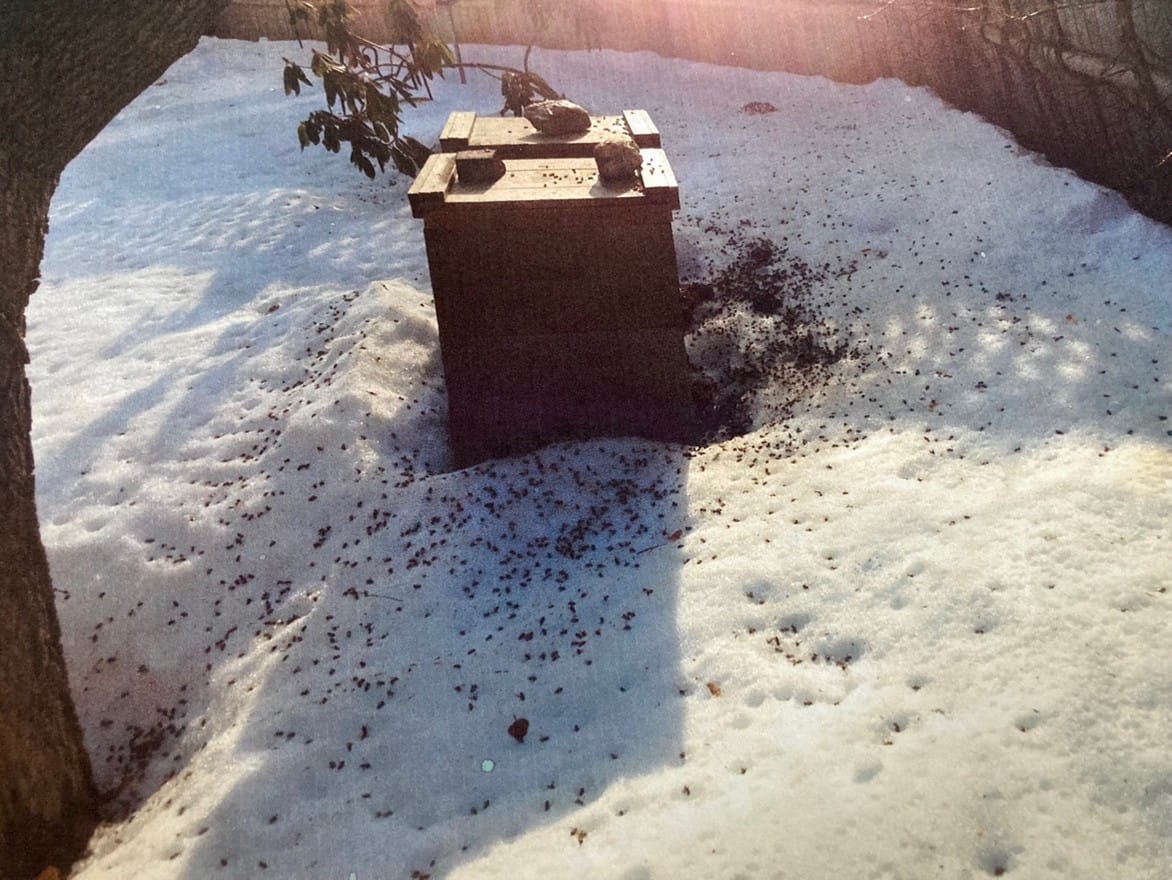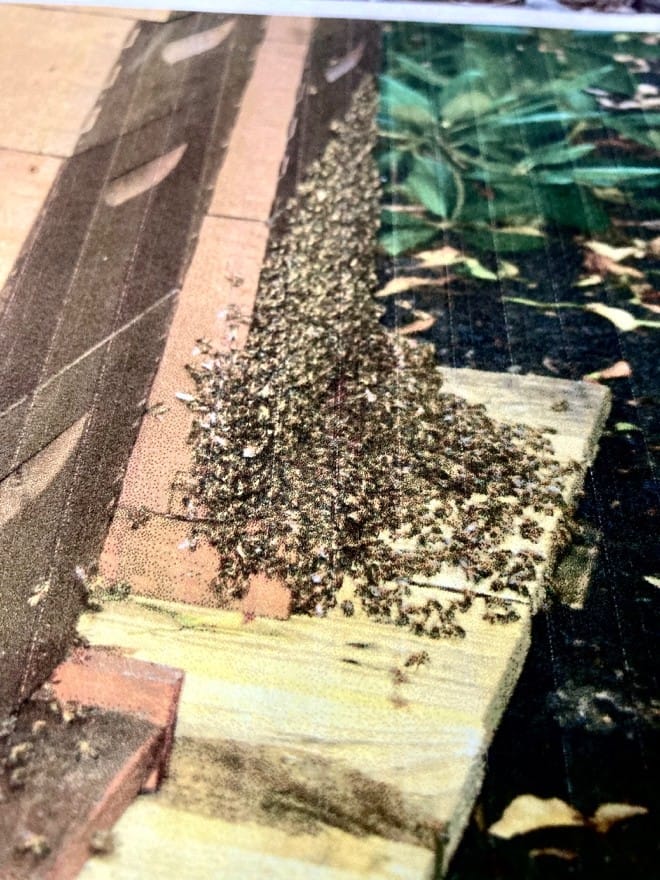A Community in a Box: How Honeybee Hives Work for the Survival of the Species
Columnist Bill Boivin takes us inside his honeybee hive to see how this communal insect helps its species carry on.

Bees are fascinating creatures – a natural example of a well-oiled machine where each individual is wired to support the survival of the entire community rather than focusing on its individual needs.
My wife Jane and I have an arrangement with a local beekeeper, Joel Govostes (Acacia Grove Honey Farm, Woburn MA). Joel set up two hives on our property and maintains them; he gives us two quarts of honey a year and keeps the rest for sale. We purchase another 10 quarts per year from him. Local honey is the best honey, and what could be more local than honey from our own backyard – especially our yard, which is a veritable gourmet buffet for any bee. If a dozen quarts sounds like a lot of honey, that’s because it is. And we use every bit of it. I use it in my coffee instead of sugar; Jane uses it on her cereal.
Speaking of local honey, there is some talk that it can help alleviate allergy symptoms. The thinking goes like this: allergy treatments involve giving a patient shots containing small amounts of the type of pollen that causes their reactions, keeping them continuously exposed on a non-seasonal basis and thus allowing the body to develop a year-round resistance. Given that honey contains small amounts of pollen, it might be assumed that this could substitute for allergy shots.
However, most allergies are to trees, grass, and weeds, while honey pollen is mostly from flowers. There is little scientific evidence that honey is effective in treating seasonal allergies – though many people do feel that local honey relieves their symptoms.
While I’m no bee expert, working with Joel has taught me much about their incredible survival mechanisms.
Did you know that a typical hive can have up to 60,000 bees? The vast majority are female worker bees that have a lifespan of about 45 days. After the first 90 days with two hives, my first question for Joel was: why don’t I have tens of thousands of dead bees in my yard? The answer: Most fly away to die; bees carry the other corpses away from the hive. This is a smart survival tactic: Most wild honey bees live in holes in trees, and if there were a pile of dead bees beneath the hole, the bears would know there was a honey source up there!
Bees maintain their hives and their honey to be incredibly clean. A sealed jar of honey will last indefinitely. Archeologists have found honey 2000 years old that is still good!
There are basically three types of bees in a hive: One queen (who can live for 3 years), many workers, and a few drones. The male drones mate with the queen, the queen lays the eggs, and everything else is done by the workers (all female) – constructing the honey comb, collecting pollen and nectar and turning it into honey, maintaining the hive’s cleanliness, caring for the young. They are busy little bees!
Hive temperature maintenance is critical to survival of the queen and thus the entire colony. The entire swarm survives the coldest season by maintaining hive temperature at about 90 degrees all winter long! They do this by eating stored honey for energy and beating their wings to generate heat to keep the queen warm. In winter, egg production and hatching ceases, so, remarkably, workers born just before winter have an expanded life expectancy, long enough to survive the winter! Once winter has passed, spring bees go back to a 45-day lifespan. What an amazing example of nature’s adaptability!

One winter, my hives were almost completely buried in snow – well above the hive entrance. The bees were trapped inside for weeks. One warm late February day, the snow melted just enough to uncover the hive entrance. On that day, all the bees came out, circling in a swirling cloud above the hive! I was in a panic. I called Joel, told him what was happening, and asked “What are they doing? It’s winter… are they all going to die?” Joel laughed. He explained that having been stuck inside so long, they just wanted to take advantage of a warm day to come out and get a little exercise…and to poop! Honeybees are so fastidious about cleanliness that they will hold it all winter rather than poop in the hive! (Since my truck was parked nearby, I now know what bee poop looks like.)
Another housekeeping chore was on order for that day, as well – time to bring out the dead! The snow around the hive was littered with dead bees. After that warm day was over, they all went back to their winter routine inside the hive box. In the spring, they carried all those dead bees away.
In the summer, when temperatures get to 100o or more, the entire swarm of workers will congregate on the outside of the hive. They then use water and wing beating to cool the hive and keep the interior (and the queen) at the usual 90 degrees.

Unlike wasps, bumblebees, and many other insects where only the queens survive the winter, honeybees have engineered this complex hierarchical society to protect the queen and ensure survival of their species.
These are just a few of the fascinating ways honeybees work together to survive and to thrive. Next time, we’ll talk about how swarming works – and why bees do it.
Bill Boivin is a scientist, retired from 30 years of active duty with the United States Public Health Service. He is a Burlington Town Meeting Member and Conservation Commissioner. He and his wife, Jane, grew up in Lynn and now live in Burlington with their 2 mini dachshunds, 7 chickens, and Maya, a ball python. Bill and Jane have shared a love of nature, gardening, and wildlife for over 50 years. They have fostered, healed, raised, and loved a remarkable variety of animals in their time together. Learn more about Bill.




